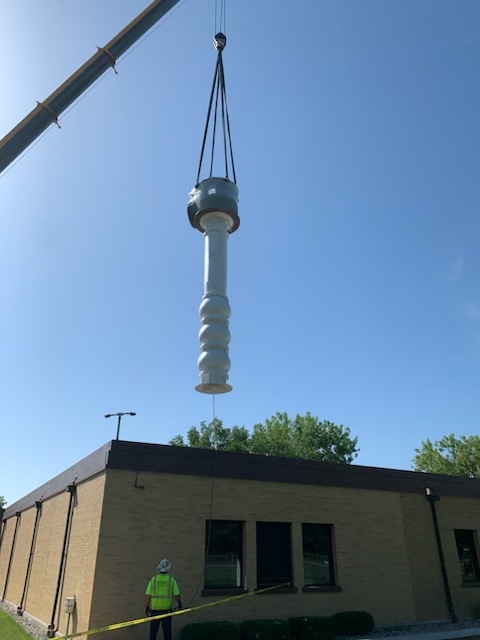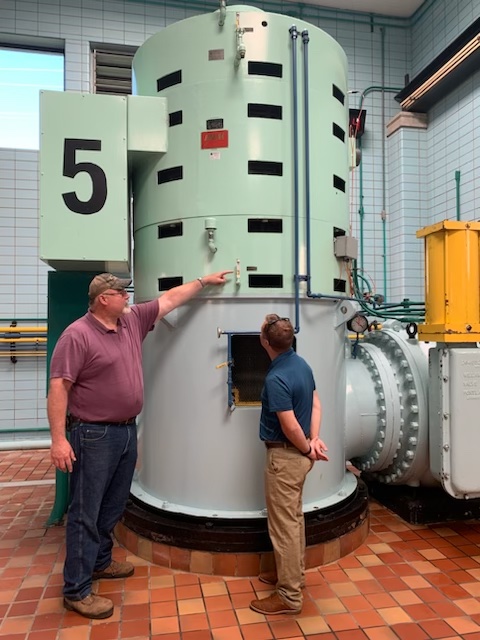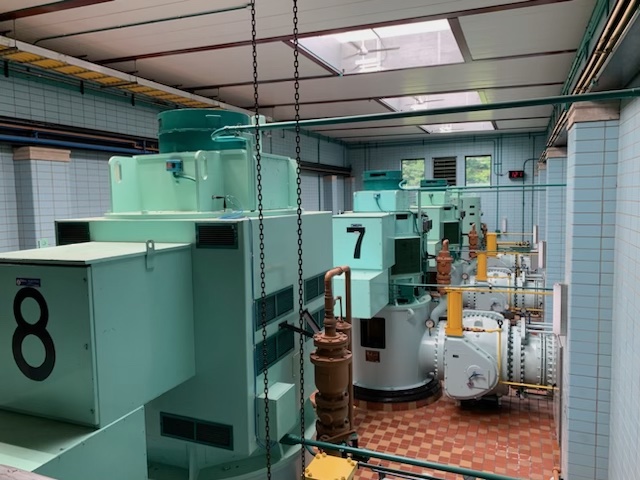
In the heart of the Great Lakes region, where access to high quality raw water is paramount, the Saginaw-Midland Municipal Water Supply Corporation (SMMWSC) is critical in delivering raw water to communities across mid-Michigan. Serving as a lifeline for the Michigan cities of Saginaw, Midland and Bay City (along with several others), SMMWSC helps ensure that more than 230,000 people have access to safe drinking water every day. Established in 1946, the SMMWSC raw water distribution system includes two deep water intakes, three pump stations and two parallel pipelines, each approximately 65 miles long and ranging in size from 48 to 72 inches in diameter. As it serves as a vital raw water supplier for the mid-Michigan region, SMMWSC leadership recently undertook a significant endeavor to rebuild Pump 5 at its Whitestone Pump Station.
.jpg)
The Whitestone Pump Station, situated north of AuGres, Michigan, serves as the cornerstone of the system, facilitating the withdrawal and distribution of raw chlorinated water from Lake Huron to the region’s treatment plants.
Evolution of Whitestone Pump Station
Equipped initially with four split-case 20 million gallons per day (mgd) horizontal pumps, the Whitestone Pump Station underwent an expansion in 1965 to accommodate the region’s growing water demands. Pump 5, installed during this expansion, emerged as a pivotal component, equipped with a 2,500 horsepower (hp) synchronous motor and a three-stage vertical turbine pump capable of delivering 60 mgd. Over the next couple of decades, additional vertical turbine pumps were added with pumping capacities between 42 and 54 mgd, enhancing the station’s capacity and flexibility in meeting user demands.

With the combination of the additional pump capacity added at the Whitestone Pump Station and the completion of parallel pipelines along the entire length of the system, the two other pump stations are no longer used in regular day-to-day operations. The SMMWSC system can meet user demands by pumping directly from the Whitestone Pump Station to its users.
The Importance of Pump 5
Whitestone Pump Station’s Pump 5, often called “the workhorse,” has emerged as a cornerstone of SMMWSC’s operations since a variable frequency drive (VFD) was added in 2015, which facilitated dynamic flow rate adjustments and optimized energy consumption. With the addition of the VFD, Pump 5 has a capacity range between 30 and 60 mgd when being operated alone. The pump station has a capacity of up to 90 mgd when Pump 5 is being operated in parallel with other Whitestone pumps. With this wide operating range, Pump 5 accounts for providing over 50% of the corporation’s annual water supply to its users.
.jpg)
However, in recent years, the operators and maintenance staff noticed the performance of Pump 5 had decreased. By 2021, the output of the pump had dropped by approximately 5 to 7 mgd, which prompted concerns among SMMWSC’s staff. Between the combination of Pump 5 being last rebuilt in 2003 and an inspection by a diver in 2021 observing erosion and material loss in the bottom stage impeller vanes, it became obvious Pump 5 needed to be rebuilt to restore the pump’s efficiency and reliability.
Why Rebuild Pump 5?
SMMWSC’s management and board decided to rebuild Pump 5 in response to the observed drop in the pump’s efficiency and performance. The pump was removed and sent to a reputable pump repair facility for a complete disassembly, inspection, and ultimately, repairs. The pump repair facility’s inspection report highlighted several critical issues with the pump, including bearing clearances being out of spec in the suction bowl, each bowl series, the column and the stuffing box. In addition, the impellers exhibited significant material loss and had formed cracks up the impeller vanes. It is suspected the impeller’s material loss was accelerated due to dezincification since impellers were cast from silicone bronze and were being used to pump chlorinated water. Ultimately, the report concluded the damage to the impellers was beyond repair, and the impellers would need to be replaced.
.jpg)
Rebuilding Process & Technical Specifications
Once the assessment report was completed, a consulting and civil engineering firm analyzed the findings and developed a repair specification to be sent to pump repair contractors for bidding. The engineers also provided construction phase assistance on behalf of SMMWSC. The rebuilding process involved replacing bearings to restore clearances to recommended specifications and replacing worn impellers with new ones cast from 316L stainless steel. While cast stainless steel impellers typically exhibit slightly lower pumping efficiency because they have a rougher surface finish than a bronze impeller, they offer superior durability and resistance to damage, especially when pumping chlorinated water. In addition, 316L stainless steel was recommended over 316 because the L type is weldable, making future repairs to the impellers possible and reducing future maintenance/replacement costs. The total cost of the rebuild, including the cost of purchasing and installing new impellers, amounted to approximately $275,000.

Performance Improvement & Efficiency Gains
As Image 1 indicates, Pump 5’s efficiency (water hp per kilowatt [kw]) had dropped approximately 13% from 2016 to 2021; however, efficiency was restored to 2016 levels once the rebuild was completed. This marked efficiency improvement translated into a substantial electrical cost savings for SMMWSC, estimated at over $60,000 annually.

The successful rebuild of Pump 5 at the Whitestone Pump Station exemplifies SMMWSC’s commitment to maintaining operational excellence and ensuring the reliability of its water supply infrastructure. By actively monitoring and continuously investing in maintenance of the raw water system, SMMWSC has enhanced the efficiency of the system and shown its dedication to providing its users and the communities they serve with a clean, safe and reliable source of drinking water. As SMMWSC continues to evolve and adapt to the region’s changing needs, initiatives like the Pump 5 rebuild serve as a testament to its commitment to excellence in water system management.

